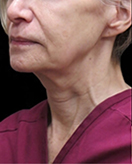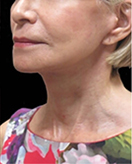Skin Cancer
Conveniently located to serve the areas of New York, NY

Adults and children may have various types of skin irregularities and growths that can be medically or cosmetically concerning. In addition to congenital birthmarks, which are present at or appear shortly after birth, people may develop numerous moles, skin tags, and other skin growths over time. Many birthmarks and skin growths are benign and don’t require any treatment, although people often choose to remove them for cosmetic reasons. Other skin growths may be precancerous or cancerous lesions that should be treated as quickly as possible. It’s important to have any skin irregularities evaluated by an expert who can determine the nature of the growth, develop the best treatment plan, and employ sophisticated surgical techniques to ensure the most elegant aesthetic results. At PSD of NYC, our patients can tap into the combined medical, dermatologic, surgical, and cosmetic expertise of both Dr. Jody Levine and Dr. Elie Levine.
Contents
Procedure
Skin cancer is the most common form of cancer in the United States, with more than two million people diagnosed with the disease annually. In fact, it’s estimated that one in five Americans will develop some type of skin cancer during the course of his or her lifetime. The good news is that most skin cancers are easily treated if detected early. At Plastic Surgery & Dermatology of NYC, we are experts in diagnosing and treating all forms of skin cancer, including melanoma and non-melanoma skin cancers. Dr. Jody Levine is a board-certified dermatologist and pediatrician, specializing in both pediatric and adult dermatology and dermatologic surgery, while Dr. Elie Levine is a gifted and renowned plastic surgeon with advanced training and expertise in cosmetics. Together, they provide patients a comprehensive approach to skin health, from skin cancer screenings and mole mapping, to diagnosis and treatment, including excisions that ensure the healthiest and most aesthetically pleasing outcomes.*
Skin Conditions of Note
- New skin growths and new moles
- Changes in the shape, color, size, or thickness of existing moles
- Moles with asymmetrical shape, ragged borders, or uneven colors
- Moles that are larger than ¼ inch in diameter
- Moles that begin to bleed, itch, or crust
- Sores that don€™t heal
- Red, scaly skin patches
- Any questionable changes in your skin
Diagnosis
You should be evaluated if you notice any suspicious changes in your skin or if you have certain risk factors for developing skin cancer (see chart below). Dr. Levine will discuss your medical history and then conduct a thorough examination of your skin. In certain cases, Dr. Levine may recommend mole mapping to document the size, appearance, and location of every mole or skin growth on the body. Certain skin growths may be monitored over time to determine if there are suspicious changes. In other cases, a biopsy may be recommended. During a biopsy, some or all of a skin growth may be excised and sent to a lab to be examined for evidence of skin cancer. Dr. Levine will thoroughly discuss the best way to diagnose and treat your condition and answer any questions that you may have.
Risk Factors
- Family history of skin cancer
- Personal history of skin cancer
- Fair skin, with light-colored hair and eyes
- Numerous moles and skin irregularities
- Precancerous skin lesions
- A history of sunburns
- Excessive sun exposure
- Tanned skin, either from sun exposure or tanning beds
- A weakened immune system
- Increasing age
- Exposure to certain substances, such as arsenic
| Types of Skin Cancer | ||
| Basal Cell Carcinoma | Most common skin cancer. Grows slowly and rarely spreads to other parts of the body. Usually occurs in sun-exposed areas, including face, ears, and scalp. | Easily treatable. Even if it is not visibly growing, basal cell should be treated promptly in order to prevent non-visible growth under the skin that may require more extensive excisions. |
| Squamous Cell Carcinoma | Second most common skin cancer. Grows slowly, but more serious than basal cell because it can spread to other areas. Usually occurs in sun-exposed areas, including face, lips, ears, and hands. | Easily treatable if detected early. Should be treated promptly. |
| Melanoma | Most serious skin cancer. Can spread quickly from skin to other areas and internal organs. Can develop anywhere on body. Often appears on trunk, head, neck, and lower legs. | Very high cure rate if diagnosed and treated early. Should be treated immediately. |
Treatment
There are various ways to treat skin cancer and precancerous skin lesions (actinic keratoses), depending on the types of cancer, as well as the size, depth, and location of the lesions. Most skin cancer excisions can be performed on an outpatient basis using local anesthetic, right in the comfort of our beautiful offices. Small lesions that are limited to the surface of the skin may be shaved off, or at times scraped and cauterized, while other lesions may be excised (cut off) surgically. More extensive lesions may be removed in our state-of-the-art, in-office operating suite, which is accredited by the American Association for Accreditation of Ambulatory Surgery Facilities (AAAASF), or in a hospital setting. In certain cases, depending on the location and size of the cancer, Dr. Levine may recommend consultation with a Mohs surgeon.
Skin Cancer Specialist
During excisions, both the cancerous tissue and a surrounding margin of healthy skin must be removed. As a leading dermatologist, Dr. Jody Levine knows how to take the proper margins and mark the specimens correctly for lab analysis. Dr. Elie Levine uses the most sophisticated plastic surgery techniques to limit any scarring. Drs. Levine can also recommend advanced post-procedure measures, such as specialized skin care products or laser therapy, in order to accelerate healing, minimize scars, and ensure the best aesthetic results.*
| Types of Skin Cancer | ||
| Procedure* | Recovery* | Post-Op Care* |
| Usually performed in our medical facility. Occasionally performed in the hospital. | Go home same day | Sutures removed in 5-14 days |
| Procedure time varies, depending on the extent of the lesion and can range from a few minutes to an hour. | Back to work immediately | Wound area should be kept clean and moist. Healing ointment and a band-aid is often recommended twice daily until fully healed. |
| Local anesthesia | Light exercise immediately | |
| Avoid stretching muscles around the incision for 2-6 weeks | ||
Expectations
Most skin cancer excisions are performed on an outpatient basis in our offices. In certain cases, a hospital setting may be recommended. Local anesthetic is used to ensure patient comfort. Dr. Levine will determine the appropriate margins for excision and send the specimen to the lab for evaluation after the procedure. Most patients can return to normal activities immediately following the procedure, and stitches are removed in 5 to 14 days.* Periodic follow-up appointments will be recommended to monitor any new cancer development.
Birthmarks
There are a variety of different types of birthmarks that may cause cosmetic or medical concerns for both children and adults. Port wine stains, hemangiomas (benign vascular tumors), and other types of vascular birthmarks can often be successfully treated with laser therapy. Depending on the type, size, and location of the various birthmarks, surgical excision may be recommended. Drs. Levine will discuss with you which procedure or combination of procedures may best suit your specific needs, as well as the best before and after care to ensure optimum results.
At PSD of NYC, patients benefit from the combined expertise of both Dr. Jody Levine and Dr. Elie Levine. Dr. Jody Levine is a specialist in pediatric dermatologic surgery and the excision and cosmetic repair of birthmarks in children. With an intuitive eye and skilled touch, she helps patients achieve beautiful and natural-looking results.* Dr. Elie Levine combines the artistic sensibility of a gifted plastic surgeon with sophisticated surgical techniques to ensure the most cosmetically elegant excision repair.* Together, Drs. Levine offer a unique blend of diagnostic, surgical, and cosmetic expertise that extends from initial consultation through treatment and follow-up care.
During The Procedure
Birthmark excisions are performed on an outpatient basis in our offices. Local anesthetic is used to ensure patient comfort, and most patients may return to normal activities immediately following the procedure. Stitches are usually removed in 5 to 14 days.*
Contact
Dr. Elie Levine will be happy to meet with you to discuss post-bariatric weight loss procedures. Please call our office at (212) 988-1800, or make an appointment online for a personal consultation in our New York City offices.

